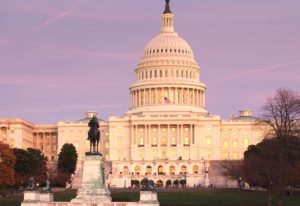
ARPA: American Rescue Plan Act of 2021 – A Look at the Impact on Tax Laws
by Jill Clark, CPA
Nearly one year after the first significant COVID relief legislation was passed, President Biden signed the fourth major piece of legislation into law that provides assistance to the American people as we continue to fight against the many impacts of this pandemic. The $1.9 trillion dollar piece of legislation was signed into law on March 11, 2021. This legislation contains several new provisions while also making changes to and extending the timeline on several existing provisions that were introduced in earlier COVID relief legislation. This article focuses on the various federal tax related provisions that are being introduced, changed or expanded as part of this latest round of COVID relief legislation.
$1,400 Stimulus Checks
A third round of stimulus checks will be making their way to eligible individuals. Eligible individuals whose adjusted gross income (AGI) does not exceed the phase-out limits can expect to receive $1,400 per person (including their dependents). Therefore, a family of 4 (husband, wife and 2 dependent children) should receive $5,600 if their AGI does not exceed the $150,000 AGI threshold set for married couples.
Click Here – to read our more in-depth article that walks through the eligibility requirements, phase-out thresholds and “additional payment” provisions included in this latest round of stimulus legislation.
Changes to the Child Tax Credit for 2021
This legislation makes several temporary changes to the existing $2,000 child tax credit. The following is a summary of the changes that have been made (note that these changes are only applicable for 2021 tax years):
• The definition of a qualifying child has been changed to increase the maximum age for which a child tax credit is allowed from 16 to 17 years old.
• The child tax credit will be a fully refundable tax credit for 2021.
• The current $2,000 child tax credit is being temporarily increased for taxpayers with modified AGI below certain phase-out limits:
o For children under the age of 6, the credit will equal $3,600 per qualifying child (an additional credit of $1,600)
o For children ages 6 – 17, the credit will equal $3,000 per qualifying child (an additional credit of $1,000)
The following are the phase-out thresholds that are applicable to these additional child tax credit amounts for 2021:
o Married filing joint filer (or surviving spouse filer): The additional child tax credit will begin phasing out once AGI reaches $150,000.
o Head of Household: The additional child tax credit will begin phasing out once AGI reaches $112,500.
o All Other Filers: The additional child tax credit will begin phasing out once AGI reaches $75,000.
The amount of additional child tax credit that a taxpayer is eligible to receive for 2021 is reduced by 5% of the amount their AGI exceeds their applicable threshold.
Note that the phase-out thresholds that were in existence prior to this law still apply to the existing $2,000 child tax credit ($400,000 (MFJ); $200,000 (all others)). The phase-out limitations referenced above are only applicable when determining if a taxpayer is eligible for the additional child tax credits ($1,000 or $1,600 depending on the age) that were made available as part of this legislation for 2021 tax years.
• The new legislation puts a framework in place requiring the IRS to develop a system to provide taxpayers with the option to receive 50% of their 2021 child tax credit in advance. The legislation states that taxpayers may start receiving ½ of their 2021 credits as early as July 1, 2021.
Expansion of Child and Dependent Care Credit for 2021
For 2021, the child and dependent care credit has been significantly expanded as follows:
- The percentage of qualifying expenses eligible for the credit has been increased from 35% to 50%.
- The maximum amount of qualifying expenses on which the credit can be claimed has been increased from $3,000 for one qualifying child ($6,000 for two or more qualifying children) to $8,000 for one qualifying child ($16,000 for two or more qualifying children).
- The percentage of eligible expense that qualify for the credit currently starts to phase-out when a taxpayer’s AGI reaches $15,000. For 2021, the AGI phase-out will not start until taxpayer’s AGI reaches $125,000.
- The credits will be fully refundable for 2021.
Increase in Exclusion for Employer Provided Dependent Care Assistance for 2021
For 2021, taxpayers may exclude, from their taxable income, up to $10,500 that they receive from their employers under a dependent care assistance program. Prior to this legislation, that limit was set at $5,000.
Taxation of 2020 Unemployment Benefits
A last-minute addition to the bill provides certain taxpayers the ability to exclude up to $10,200 of unemployment benefits from their 2020 federal taxable income. This exclusion is only available to taxpayers who have less than $150,000 of modified AGI for 2020. This means taxpayers that have already filed their 2020 income tax returns and included these amounts in taxable income can file an amended return to claim a refund of the federal taxes they paid on the first $10,200 of unemployment benefits.
Click Here – to read our more in-depth article regarding the changes to and expansion of the unemployment benefits enacted as part of this legislation.
Changes to the Affordable Care Act (ACA) Premium Assistance Payments/Subsidies
The legislation reduces the premium percentages for 2021 and 2022 resulting in eligible individuals receiving higher premium tax credits during 2021 and 2022. The legislation also includes a provision that will allow taxpayers that receive unemployment compensation anytime during 2021 to be eligible for premium assistance payments regardless of their household income levels.
For 2020 tax years, the provision requiring individuals to repay excess premium credits they received during 2020 has been eliminated. This means individuals who did not correctly estimate their income levels for 2020 and who received excess advanced premium credits during 2020 will not be required to pay those premiums back when reconciling the credits on their 2020 tax return.
Exclusion of Student Loan Forgiveness from Taxable Income
The legislation provides that specified student loans discharged during 2021 through 2025 will be excluded from taxable income, regardless of the reason the loans are forgiven. There is not a current provision to discharge any student loan debt; however, there has been a lot of support for there to be legislative action taken to discharge a certain amount of student loan debt. Should that action be taken in the future, this provision should ensure those amounts are not taxable.
Extension of Limitation on Excess Business Losses for Noncorporate Taxpayers
For tax years beginning in 2021, noncorporate taxpayers will be limited to the amount of business losses they are allowed to deduct on their income tax returns ($500,000 married filing joint; $250,000 all other filers). This law was originally introduced under the Tax Cuts and Jobs Act of 2017 and was set to expire after tax years beginning in 2025. This legislation includes a provision to extend these “excess business loss” provisions another year; therefore, they will be in effect through tax years beginning in 2026.
Changes to the Earned Income Tax Credit for 2021
This round of legislation makes several temporary changes to the earned income tax credit (EITC) that are applicable to the 2021 tax year. The most significant changes impact the rules applicable to taxpayers without qualifying children. For these taxpayers, many eligibility requirements have been relaxed and both the credit percentage and phase-out limits have been increased. These changes will result in taxpayers without qualifying children being eligible for significantly more EITC on their 2021 tax returns. In addition to these changes, if a taxpayer’s 2021 earned income is less than their 2019 earned income amount, the taxpayer may determine their 2021 EITC using their 2019 earned income amounts.
Changes to the Employee Retention Credit and Paid Sick and Family Leave Credits
The Employee Retention Credit (ERC), currently set to expire June 30, 2021, has been modified and extended thru December 31, 2021.
In addition, the Paid Sick and Family Leave Credits set to expire on March 31, 2021 have been extended to September 30, 2021. In addition to Paid Sick and Family Leave Credits being extended, several changes were made that impact the eligibility requirements and maximum benefits and credit that can be claimed.
Check our regularly updated blog at www.brccpa.com to read more on the changes made by the American Rescue Plan Act of 2021 to the Employee Retention Credit and the Paid Sick and Family Leave Credits.
Tax Treatment of “Targeted EIDL Advance” and “Restaurant Revitalization Grants”
The Consolidated Appropriations Act of 2021 (CAA) made available to eligible businesses “Targeted EIDL Advance” Grants from the SBA. In addition, within this legislation, a new round of assistance known as “Restaurant Revitalization Grants” is being made available through the SBA to restaurants meeting certain eligibility requirements.
This bill includes language that excludes amounts received under these two provisions from being included in taxable income. In addition, it provides that expenses paid with these monies are deductible, assuming all other requirements for expense deductibility are met.
Check our regularly updated blog at www.brccpa.com to read more on the changes made to the existing PPP loan provisions as well as details on “Restaurant Revitalization Grants”.
Please note that this is a summary of the laws that are in effect for federal tax purposes. Each state will have to make a determination of whether or not they choose to conform to the federal changes made by this legislation.
If you have any questions regarding these tax provisions, please do not hesitate to reach out to your trusted BRC tax advisor.

